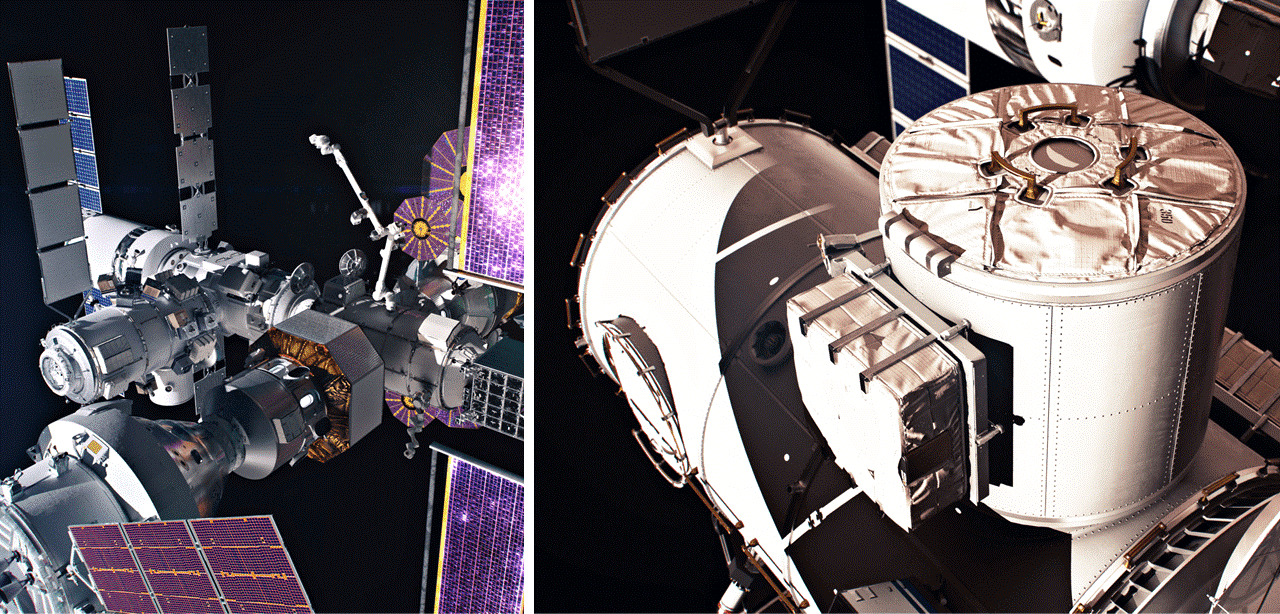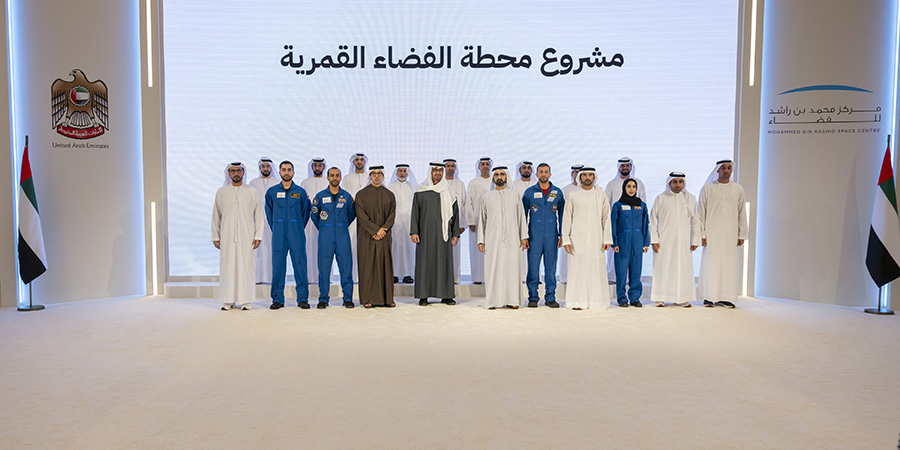Embarking on a new space venture in 2024, the UAE revealed a collaboration with NASA on the Lunar Gateway Station project— the first-ever space station to orbit the Moon. Securing a permanent seat, the UAE will actively contribute to the extensive lunar and space exploration initiative. As one of the pioneering nations sending an astronaut to the Moon, the UAE gained priority access to valuable scientific and engineering data collected by the station, enriching its pursuit of knowledge.
His Highness Sheikh Mohammed bin Rashid Al Maktoum said, “We have a longstanding journey in the space sector. Our team comprises highly skilled professionals capable of leading the most challenging scientific missions. Our unwavering ambition knows no limits when it comes to our future Emirati projects.”
Hamad Obaid AlMansoori, Chairman of the Mohammed Bin Rashid Space Centre (MBRSC), said, “Our participation in this project marks a new chapter in the UAE's journey of space exploration. Guided by the ambition of our leadership, we are entering a fresh era in space exploration. Their wise vision has been a driving force behind our involvement in the development of Nasa's lunar Gateway station— a global milestone showcasing the UAE's commitment and expanding capabilities.”
The UAE is joining forces with the US, Japan, Canada, and the European Union for this international space project.
Notably, 2023 marks a pivotal year for the UAE in space exploration, achieving historic milestones such as becoming the first Arab nation to land a rover on the Moon and sending an Emirati astronaut on a six-month mission to the International Space Station.
NASA’s Lunar Gateway Station
The lunar space station is designed to facilitate extended exploration of the Moon as part of NASA's Artemis project. This initiative aims to bring humans back to the lunar surface and establish sustainable long-term missions.
“By combining our resources, scientific capacity, and technical skill, the U.S. and UAE will further our collective vision for space and ensure it presents extraordinary opportunities for everyone here on Earth,” said, US Vice President, Kamala Harris.
The UAE will be creating the crew and science airlock for the lunar space station— a crucial element in ensuring a secure environment for astronauts. This will serve as the station's gateway, facilitating the entry and exit of missions and will allow astronauts to travel to and from the Moon's surface via the lunar Gateway station.

From NASA: Pictured is an artist’s concept of Gateway (left) and an artist’s concept of a government reference airlock (right)
The UAE, through MBRSC, will also be responsible for managing and operating the station's airlock.
The airlock measures 10 meters in length, 4 meters in width, and weighs 10 tonnes, while the overall station size is 19 x 20 x 42 meters. Besides functioning as a space laboratory for various scientific and technical experiments, the station is designed with a minimum lifespan of 15 years, with the possibility of extension.
The initial components of Gateway are anticipated to launch by 2025, and the Emirates Airlock is slated for launch by 2030.










